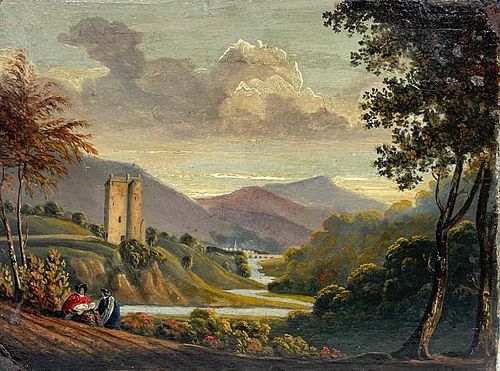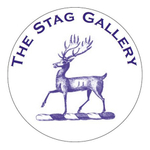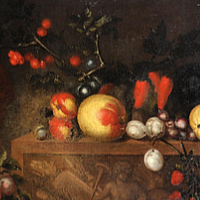Victorian Scottish Oil Painting Family in Landscape by Niedpath Castle
About Auction
May 11, 2022 - May 22, 2022
A finely curated auction of European fine art, presenting original paintings from the 17th century right through to the latter part of the 20th century: Old Masters, Portraits, Marines, Landscapes, Sporting Art.... Stag Gallery Auctions staggallerycollections@gmail.com
- Lot Description
Neidpath Castle' Scottish School, mid 19th century oil painting on artists board, unframed painting: 8.25 x 11 inches condition: overall very good and pleasing, a few surface marks from old varnish deterioration. provenance: private collection, UK A delightful view of this Victorian family enjoying a day out in the Scottish landscape, with their young child. Niedpath Castle stands tall in the background, under a beautiful sky and backdrop of the glorious landscape that Scotland displays. Neidpath Castle is an L-plan rubble-built tower house, overlooking the River Tweed about 1 mile (1.6 km) west of Peebles in the Borders of Scotland. An early castle was probably built here by Simon Fraser of Oliver Castle between 1263 and 1266, while he held the office of High Sheriff of Tweeddale. The barony of Neidpath was acquired by the Hay family, through marriage to the Fraser heiress in the early 14th century. Sir William de Haya (d.c.1390) probably built the present castle in the late 14th century. It was held by them until the 17th century, although Sir William's grandson, Sir William Hay, married the daughter and heiress of Sir Hugh Gifford of Yester, acquiring Yester Castle, which became the principal family seat, although Neidpath continued to be used. It was visited by Mary, Queen of Scots in 1563, and by her son James VI in 1587. In 1645, Neidpath was garrisoned against the Royalist forces of James Graham, 1st Marquess of Montrose, although the following year, John Hay of Yester joined the King's party, and was created 1st Earl of Tweeddale by King Charles II. During Oliver Cromwell's invasion of Scotland in 1650, Neidpath was attacked. Mike Salter states that the castle was surrendered without a fight, although other sources suggest that it required the longest assault on any stronghold south of the River Forth to force it to surrender. James Taylor, writing in 1887, states that the 13th-century tower was demolished by artillery during the siege and the Listed building report notes that there was damage to the west wing. During the 1660s, the 2nd Earl of Tweeddale remodelled the castle, and constructed outbuildings. The 2nd Earl was an agricultural "improver", who planted an avenue of yews, of which one side remains. However, he was declared bankrupt, and sold Neidpath to William Douglas, 1st Duke of Queensberry in 1686. In 1693, Queensberry gave the castle to his second son William Douglas, later the 1st Earl of March. His son William, the 2nd Earl, made alterations to the castle in the 18th century. The 3rd Earl inherited the title and estates of the Duke of Queensberry in 1778, and subsequently let Neidpath to tenants. These included the philosopher and historian Adam Ferguson. The castle suffered neglect, however, and by 1790 the upper storeys of the wing had collapsed. William Wordsworth and Walter Scott both visited the castle in 1803. On the death of the Duke in 1810, the castle, along with the earldom of March, was inherited by the Earl of Wemyss, although the dukedom went to the Scotts of Buccleuch. Neidpath still belongs to Earl of Wemyss; the Earl's heir takes his courtesy title, Lord Neidpath, from it.
Dimension
Height: 8.25Width: 11.00 - Shipping Info
-
We have our own in house professional packing and shipping department - and can ship any painting worldwide for very reasonable rates. Please feel free to ask any questions you may have regarding the process. We mainly use Fedex and all parcels come with full online tracking. A signature is required for the parcel on delivery. Transit insurance to cover loss or theft is available, please ask for a quote. Due to the fragile nature of old frames, our shippers do not provide compensation for any damage caused during transit. By placing your bids, you accept and acknowledge that we cannot compensate or refund, under any circumstances, for any damage occurring to frames during transit. Transit time from the UK to American is around 2-3 working days. Thank you.
-
- Payment & Auction Policies
-
Available payment options
-
- Buyer's Premium



 EUR
EUR CAD
CAD AUD
AUD GBP
GBP MXN
MXN HKD
HKD CNY
CNY MYR
MYR SEK
SEK SGD
SGD CHF
CHF THB
THB














